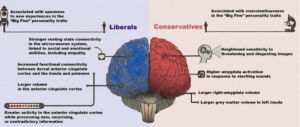Where does the sig nal to pull your hand away from heat originate? If your answer is the brain, you’ve already been burned. Instinctively, we pull our hand back without conscious thought, because the response to the stimulus takes a short cut and originates in the spinal cord because of the need for quick action.
nal to pull your hand away from heat originate? If your answer is the brain, you’ve already been burned. Instinctively, we pull our hand back without conscious thought, because the response to the stimulus takes a short cut and originates in the spinal cord because of the need for quick action.
According to venture capitalist Peter Levine the need for this same type of short cut may be happening soon with computing. Mr. Levine said that he saw a shift in computing coming from the cloud (centralized) to the return of edge computing (decentralized) because the wave of innovations from IoT, and AI, are driving the need to have decisions made in milliseconds.
As Mr. Levine points out, a connected car is basically a data center on wheels “it has 200 plus central processing units…doing all of its computations at the endpoint and only pass back to the cloud.” Just like you hand doesn’t have time to send a signal to the brain, autonomous vehicles need to react instantaneously to the situation.
Data, insight, and now action, will be moving to the point of engagement in this future view. Now think about the potential challenges that present marketers in staying on brand, and controlling the message with thousands, or even millions, of touchpoints acting independently. Today, the best messaging and value proposition work can (and usually does) go off the track the moment it makes its way to sales and service reps.
Marketers live with the daily issue of cross channel attribution, add cross channel communication to the mix and we better have really good tracking tools! Sure, we can pre-set the messages, designed algorithms to present them at the right moment in the buying cycle, but controlling and tracking the delivery of each message in the context of an overall brand story will be the challenge.
And keep in mind, machines aren’t the only things that learn. As research has shown, the buying process is a highly emotional roller coaster. With machines entering the process we risk driving efficiency at the expense of dehumanizing the experience. As machines learn, we also begin to sense whether we are dealing with a human or a machine.
For example, do you really get the “warm fuzzies” from all those “HBD” messages on Facebook, or the “Congrats on the New Job” on LinkedIn? Machines have been great at helping us be more informed, but they have also have made it easy to turn highly personalized interactions into transactional tasks, void of any emotional connection.
The first wave of machine learning has been about improved efficiencies, productivity, and predictability. As Jeff Bezos stated in his brilliant letter to shareholders, “Machine learning drives our algorithms for demand forecasting, product search ranking, product and deal recommendations…much of the impact of learning will be of this type – quietly, but meaningfully, improving core operation.”
As the next wave approaches, we should be cautious on how it is applied to the buying process. The focus should be on making humans more human, becoming more instinctive, so potential customers don’t get burned.


